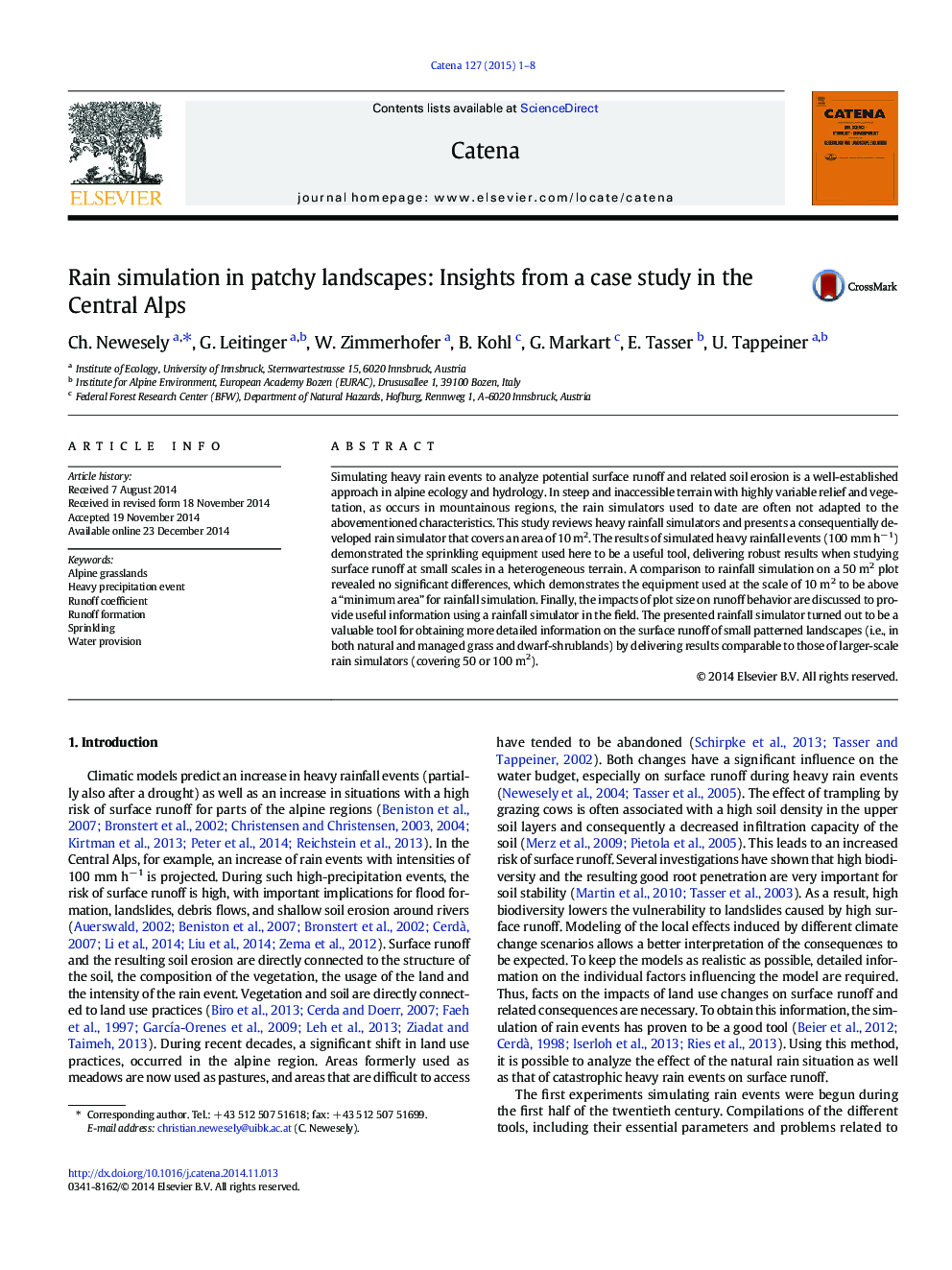| Article ID | Journal | Published Year | Pages | File Type |
|---|---|---|---|---|
| 4571202 | CATENA | 2015 | 8 Pages |
•Small portable rainfall simulator for surface runoff studies•Detailed instruction guide for the small rainfall simulator•Detailed specification of simulated rainfall characteristics•Benefits: low water consumption, marginal impacts on surface, homogenous water distribution•Comparison of 9 artificial rainfall simulators
Simulating heavy rain events to analyze potential surface runoff and related soil erosion is a well-established approach in alpine ecology and hydrology. In steep and inaccessible terrain with highly variable relief and vegetation, as occurs in mountainous regions, the rain simulators used to date are often not adapted to the abovementioned characteristics. This study reviews heavy rainfall simulators and presents a consequentially developed rain simulator that covers an area of 10 m2. The results of simulated heavy rainfall events (100 mm h− 1) demonstrated the sprinkling equipment used here to be a useful tool, delivering robust results when studying surface runoff at small scales in a heterogeneous terrain. A comparison to rainfall simulation on a 50 m2 plot revealed no significant differences, which demonstrates the equipment used at the scale of 10 m2 to be above a “minimum area” for rainfall simulation. Finally, the impacts of plot size on runoff behavior are discussed to provide useful information using a rainfall simulator in the field. The presented rainfall simulator turned out to be a valuable tool for obtaining more detailed information on the surface runoff of small patterned landscapes (i.e., in both natural and managed grass and dwarf-shrublands) by delivering results comparable to those of larger-scale rain simulators (covering 50 or 100 m2).
